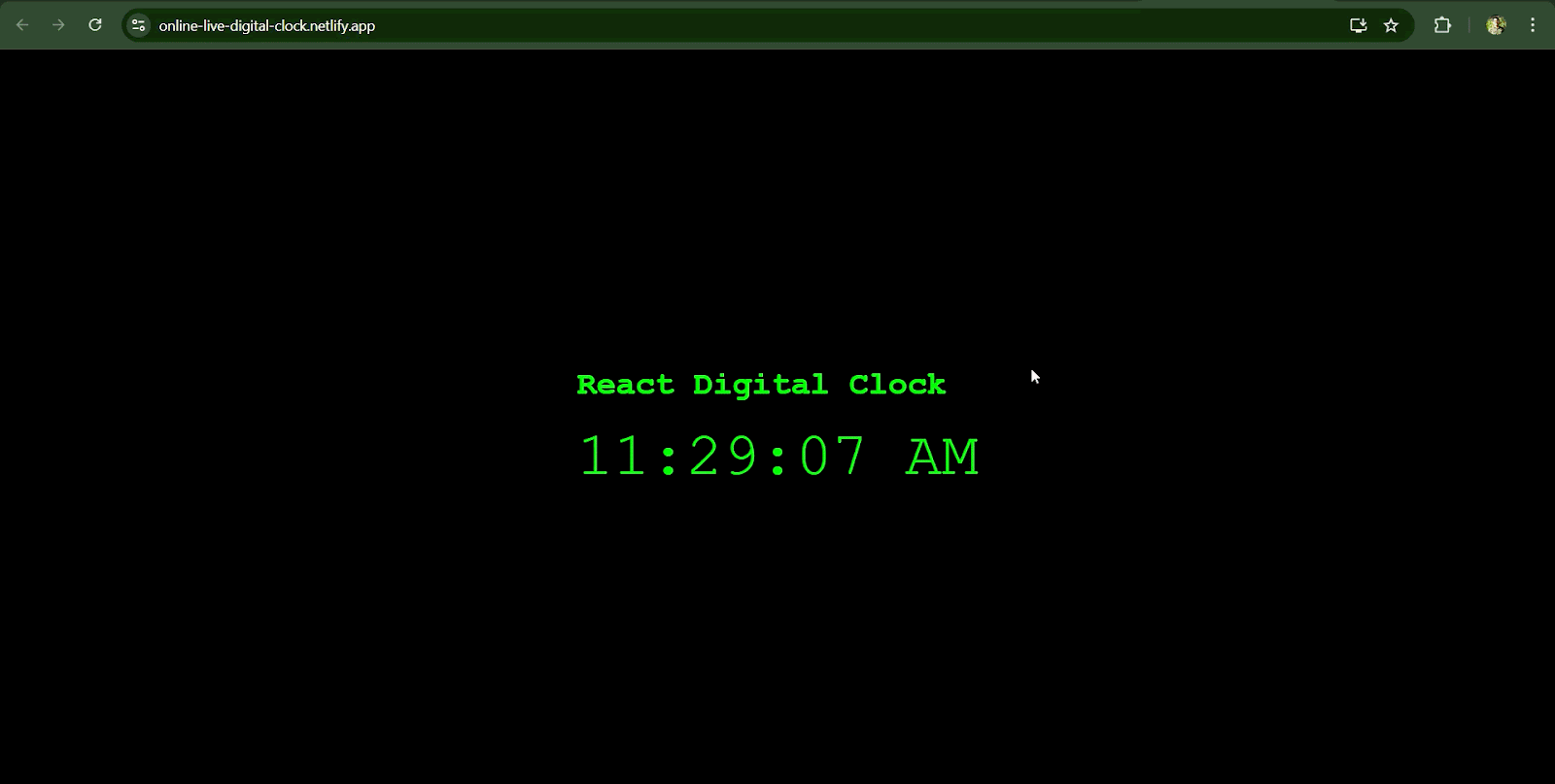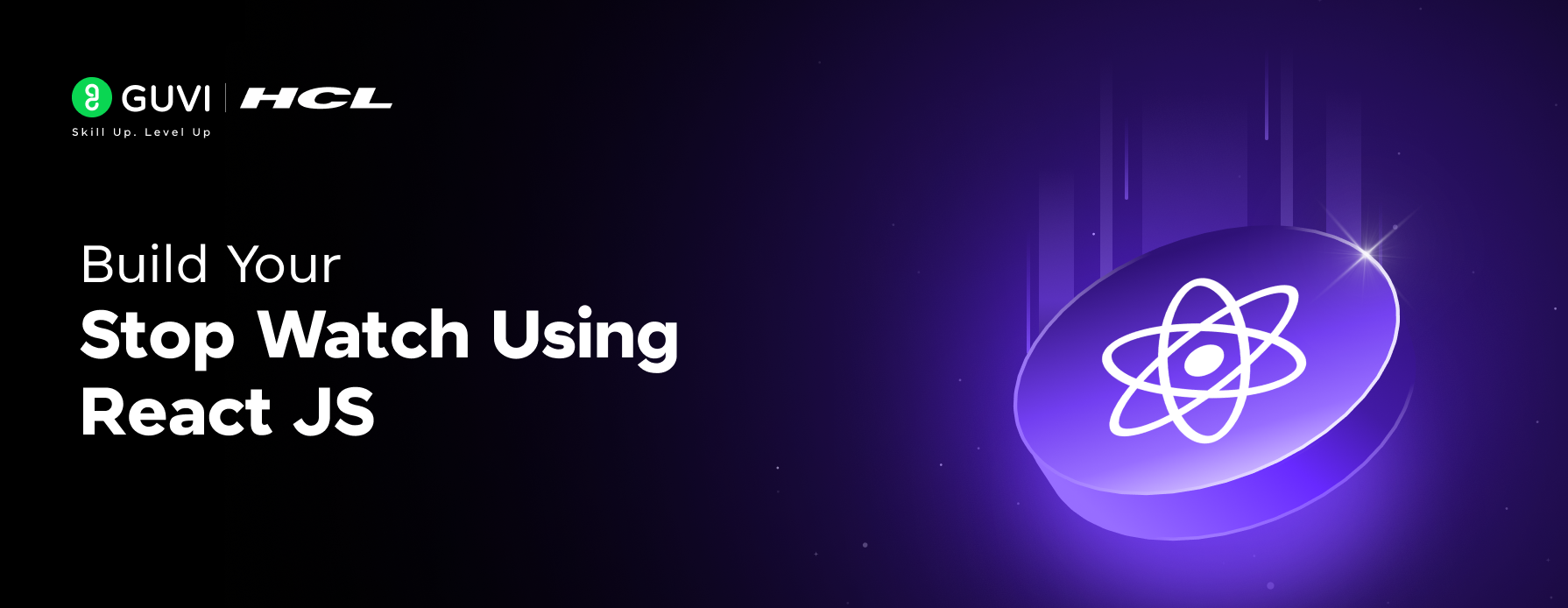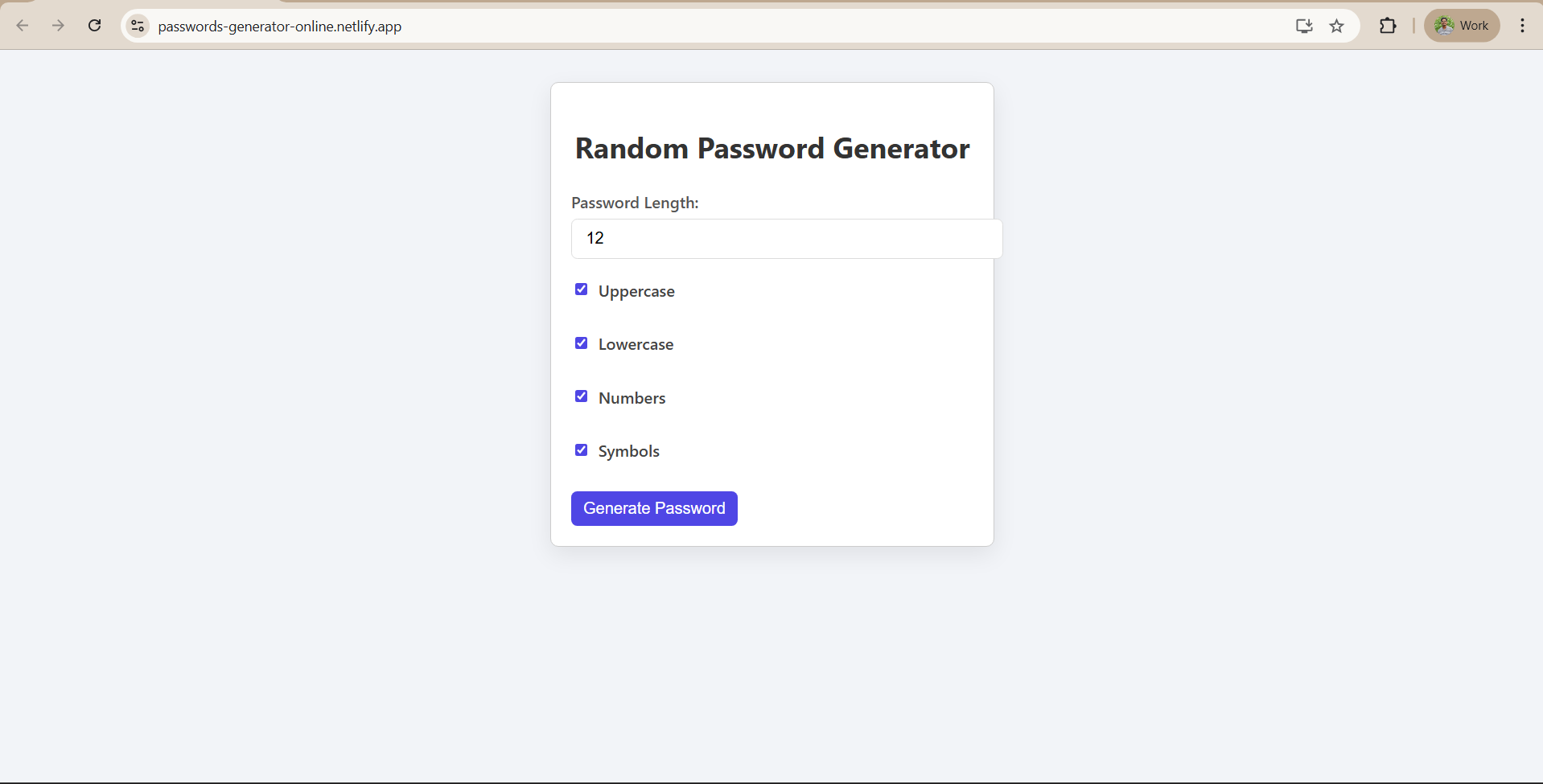Conclusion of Digital Clock
Conclusion of the Digital Clock App
Learning Outcome
Congratulations! By completing this project, you learned how to:
- Set up a React development environment (install Node.js, use create-react-app).
- Structure a React project (understand the public and src folders).
- Write React components (App, DigitalClock) using hooks: useState for state and useEffect for side-effects like timers. We saw how React efficiently updates only the changing part of the UI.
- Use JavaScript’s setInterval() function to update state every second, and how to clean up timers.
- Style the app with CSS and run it locally.
- Deploy a React app on Netlify, either via the CLI or by connecting a GitHub repo. We followed Netlify’s guidance (install CLI, netlify init) to publish our site.
Live Link & Output Screenshot
Our live clock app is now available online. You can view the working clock here:
Digital Clock Demo on Netlify.
The screenshot below shows the final output, with the clock updating every second on a black background.

MCQs
Q1. Which React hook is used to perform side-effects like setting up a timer in a functional component?
A. useState
B. useEffect
C. useContext
D. useReducer
Answer: B (useEffect)
Q2. How do you call a function repeatedly every second in JavaScript?
A. setTimeout(fn, 1000)
B. setInterval(fn, 1)
C. setInterval(fn, 1000)
D. setTimeout(fn, 0)
Answer: C (setInterval with 1000 ms)
Q3. In a Create React App project, which file is the entry point that renders the root component?
A. public/index.html
B. src/index.js
C. src/App.js
D. src/DigitalClock.js
Answer: B (src/index.js)
Q4. Which command initializes a new Netlify site for deployment from the CLI?
A. netlify link
B. netlify deploy
C. netlify init
D. netlify build
Answer: C (netlify init)
Resources
Want to master ReactJS and build your portfolio by creating web apps like this? Check out GUVI’s IIT-M Pravartak Certified ReactJS Self-Paced Course, where you can master the art of building interactive user interfaces and web applications.
Additionally, if you want to understand how React works in a Full Stack environment, consider enrolling in GUVI’s IIM-M Pravartak Certified Full Stack Development Course, where you’ll learn React, Node.js, MongoDB, and more with hands-on projects, expert mentorship, and placement support. Perfect for beginners and professionals looking to upskill.
















